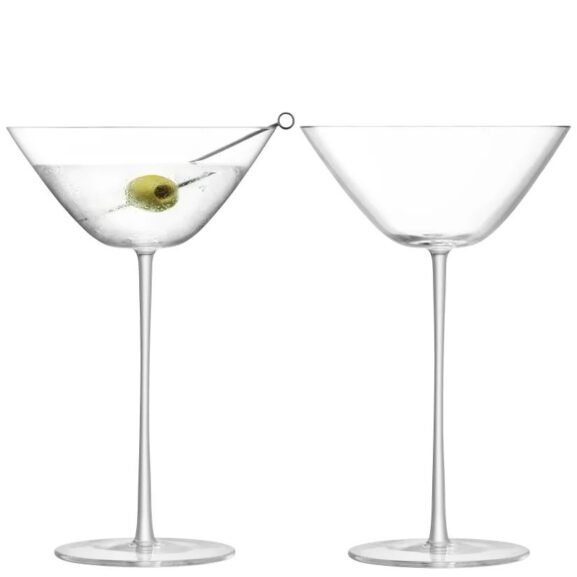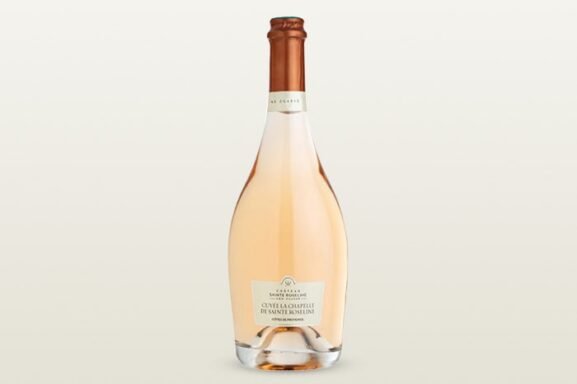How to Host a Blind Tasting Party
In the movies, there’s a magical aura around the sommelier who takes a quick whiff of a wine glass and, as if possessed by some greater force, correctly rattles off a grape, vintage and region.
“People are fascinated by blind tasting because they see it as a parlor trick,” says Chase Sinzer, co-owner of Penny and Claud in New York City. “In reality, though, it’s a practiced, sustained skill.”
Nikita Malhotra, wine director of New York City’s New England-inspired seafood spot, Smithereens, explains that there are pros and cons to the experience; having the context of the vineyard and producer is key to understanding more about any particular wine in the long run, but blind tasting (colloquially known as “blinding”) is an undeniably fun and communal way to gain confidence in your palate.
“Sommeliers and pros just love to use blind tasting to stump one another,” Malhotra says.
Whether you’re looking to build on your wine knowledge or just get together with a group of friends and a case of picks that everyone has contributed a bottle to, read on for everything you need to know to host a blind-tasting party at home.
Know Your Audience
No pun intended: A blind tasting is not the best time for the blind to lead the blind.
“You wouldn’t wanna stick a bunch of people who have never baked bread in the kitchen,” says Malhotra. “Get that one friend who really loves wine to guide everyone.”
Once you’ve appointed a group leader, Katie Hubbard, wine director at Pammy’s in Cambridge, Massachusetts, suggests taking a hint from some of your favorite classic games.
“I’ve done Clue, Guess Who and Where in the World is Carmen Sandiego? -themed blind tastings before, wherein tasters are given clues as to what the wine in the glass may be, then have to use their senses to detect what’s inside,” she explains. “There are simply so many ways to thematically go about preparing a blind tasting to cater to guest knowledge levels.”
Games aside, there are a few ways you can make your blind tastings easier for beginners, or a bit more challenging.
For a Group of Mostly Beginners
Start with what you know (or want to know)
Hubbard explains that a familiar style or producer your group drinks often can serve as a great jumping-off point for blinding.
“Choose four wines you’ve had many times, and see if you can pinpoint what they are when all their labels are stripped away,” she says.
Similarly, Chantal Forthun, winemaker at Flowers Vineyards and Winery in Healdsburg, California, suggests picking a wine region that you’d like to get to know better or plan a trip to, so you can experience the place through its wines.
“For instance, you can take a sensory journey to Sicily through a blind tasting of white and red wines from the volcanic soils of Sicily’s Mount Etna region,” she says.
Around the world with one grape
An “around the world” tasting of a single variety is another tried-and-true way to explore the different regional and climatic expressions of any grape.
Kristin Courville, sommelier at the restaurant Forge in New York City, says that Pinot Noir is an especially great choice for beginners because so many drinkers are familiar with it, despite how differently it shows up in wines.
“Our winemaking team at Flowers recently did a ‘Riesling from around the world’ blind tasting with Riesling from Germany, Alsace, California, Finger Lakes and the Okanagan Valley in Canada,” Forthun adds. “It was fun trying to guess the wine’s provenance based on acidity and aromatic profile that indicated a warmer versus a cooler climate.”
Aromatic vs. non-aromatic grapes
Tasting non-aromatic grapes like Pinot Grigio and Chardonnay from France alongside aromatic grapes like Muscat and Gewurtztraminer is a great way to learn to blind-taste at the beginner level.
“With these grapes, people really notice the differences in aroma because they’re so pronounced,” explains Sinzer, who adds that tasting based on a broader region (like France or Italy) is another good way into the experience.
For More Experienced Drinkers
Territory or vintage
Steven MacDonald, executive wine director for Pappas Bros. Steakhouse, says that digging deep into vintages or vineyard sites can keep blind tastings interesting for seasoned pros.
“For example, you could take the same producer of Burgundy in the same vintage and try several examples across several vineyard sites. That will give you the most ‘honest’ impression every single vineyard has to offer,” he says. “Likewise, you can take the same producer and vineyard site and try several different vintages in order to fully illustrate each vintage character and draw conclusions about vintage conditions and how it is expressed in the bottle.”
Play with the art of disguise
The way a wine looks can (and should) impact how we evaluate it.
“I once devilishly served a blind tasting wherein I dyed a white wine red with food coloring and served it at cellar temperature—and all those tasting never once considered it was, in fact, a white wine!” says Hubbard. “Now that’s a bit sneaky, but there are certainly ways to make blind tasting more challenging, some folks opt for dark-colored glasses to deprive the visual sense of a wine and rely solely on the nose. It’s a unique way to release our preconceived notion of a wine, and you can always have fun with it. “
Courville adds that some guests will know the wine by the capsule (the thin layer of foil that covers the neck of the bottle), so be sure to take off all of the foil or wax that you can. Or, cover up the full neck of the bottle with foil or a paper bag.
How to Pull off a Blind-Tasting Party
There are multiple ways to pull off a blind-tasting party. You can ask guests to bring a couple of bottles that adhere to a theme or pick up all the wine yourself. Either way, Sinzer suggests buying more than you think you’ll need, as many guests will (and should) want to revisit wines after their first tasting and the reveal.
“You should be tasting with wines at a normal, like, $15 price point, so just buy an extra bottle of each,” he explains. He also suggests having spittoons (a basic cup or bucket will do) on hand so everyone can sip, swirl and taste the wines better.
“Make sure all wines are tasted at the same temperature and have been in the refrigerator for the same amount of time,” says Forthun. “This goes for whites and reds if you are blind-tasting a mixed flight.”
Once you’ve stocked up on wine, here are a few tools to have on hand:
Blind wine tasting PDF: Sinzer suggests keeping it simple and sticking to printouts of the Deductive Tasting Grid, popularized by the Court of Master Sommeliers. “Have numbers or letters identifying each bottle and then have the wines identified [by number] on the printouts,” explains Courville.
Wine sleeves: Malhotra recommends these wine sleeves, which have color-coded stickers to make it easier for guests to tell wines apart once they’ve moved on from tasting them.
Aluminum foil or paper lunch bags: These may not look as elevated as sleeves, but MacDonald confirms that they do the trick. (This is how we conduct blind tastings here at Wine Enthusiast.)
Decanters and glassware: “The glasses don’t need to be fancy, but make sure you use a set of the same glass for everyone to use,” Sinzer says. “I tend to put the wine in a standard decanter and label the decanter in Sharpie—don’t worry, it wipes off with any alcohol-based cleaner—and label the bottle as well,” adds MacDonald.
Tasting mats: If you don’t have tasting mats, a roll of butcher paper works great. Forthun suggests rolling it out over the table, tethering it with painter’s tape, and using a sharpie to number each glass.
Ultimately, blind tasting is about having fun while gaining trust in your palate. Gather a group of friends, pick up some new bottles and test your knowledge!
More Tasting Coverage
In the Shop
Sommify Bundle Blind Tasting Wine Game with Tasting Bags
In Stock | $60.00
Published: November 13, 2024

